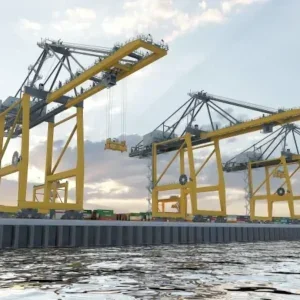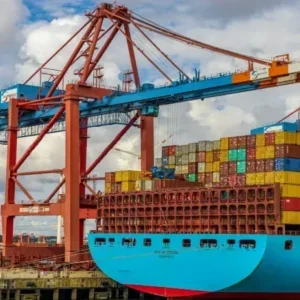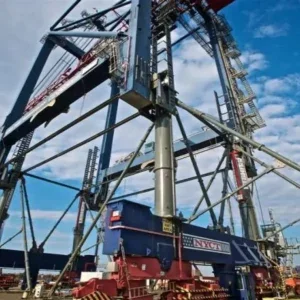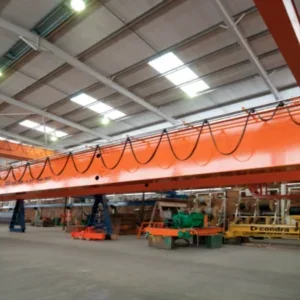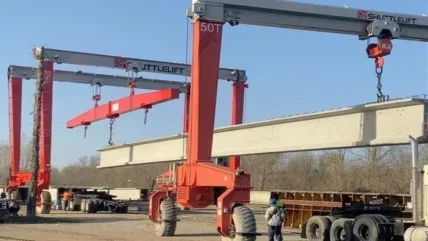
Interstate armed conflict, characterised by military confrontations between nation-states, has far-reaching implications for global industries, including the overhead lifting equipment and material handling sector. These conflicts can disrupt supply chains, alter market dynamics, and pose significant operational challenges. This article explores the impact of interstate armed conflict on this industry, examining the direct and indirect effects, and providing strategic insights for industry players to navigate these turbulent times.
Understanding interstate armed conflict
Defining interstate armed conflict
Interstate armed conflict involves military hostilities between two or more sovereign states. Unlike civil wars or internal conflicts, these confrontations have international implications, often drawing in multiple nations and impacting global trade and economic stability. Examples include the ongoing tensions between Russia and Ukraine, and historical conflicts such as the Iran-Iraq War.
Causes of Interstate Armed Conflict
Several factors can lead to interstate armed conflict:
- Territorial Disputes: Controversies over borders and territorial claims are common triggers.
- Resource Competition: Conflicts over valuable resources such as oil, minerals, and water can escalate into armed confrontations.
- Political and Ideological Differences: Diverging political ideologies and governance models can lead to international tensions.
- Historical Grievances: Long-standing historical disputes often underpin many conflicts.
Impact on the overhead lifting and material handling industry
Disruption of supply chains
One of the most immediate impacts of interstate armed conflict is the disruption of supply chains. The overhead lifting and material handling industry relies on a global network of suppliers and manufacturers. Conflict zones or areas under embargo can disrupt the flow of essential components and raw materials.
- Logistical Challenges: Armed conflicts can damage infrastructure, making transportation of goods risky or impossible.
- Increased Costs: Supply chain disruptions often lead to increased costs for sourcing materials from alternative suppliers or regions.
- Delays: Lead times can be significantly extended due to rerouting and the need for more stringent security checks.
Market volatility
Interstate armed conflict introduces significant volatility into global markets, affecting demand and supply dynamics:
- Fluctuating Prices: Prices of raw materials and finished goods can fluctuate dramatically due to supply constraints and speculation.
- Investment Hesitation: Investors may become cautious, leading to reduced capital availability for expansion and innovation.
- Demand Shifts: Conflicts can alter demand patterns, either increasing demand for certain goods due to military needs or decreasing it due to economic downturns.
Operational challenges
The operational landscape of the overhead lifting and material handling industry can be significantly altered by interstate conflicts:
- Safety Risks: Operations in or near conflict zones face heightened safety risks for personnel and assets.
- Regulatory Hurdles: Export controls, sanctions, and trade restrictions can complicate international business dealings.
- Insurance Costs: Higher risk environments lead to increased insurance premiums for operations and logistics.
Strategies for navigating interstate armed conflict
Strengthening supply chain resilience
Building a resilient supply chain is crucial for mitigating the impact of interstate armed conflicts:
- Supplier Diversification: Avoid reliance on a single supplier or region by diversifying your supplier base.
- Inventory Management: Maintain strategic stockpiles of critical components to buffer against supply chain disruptions.
- Advanced Analytics: Use predictive analytics to anticipate potential disruptions and plan accordingly.
Enhancing operational flexibility
Flexibility in operations can help companies adapt to changing circumstances brought about by conflicts:
- Flexible Manufacturing: Invest in flexible manufacturing systems that can quickly adapt to changes in production requirements.
- Remote Operations: Develop capabilities for remote monitoring and management of operations to minimise risks in conflict zones.
- Contingency Planning: Establish robust contingency plans for various conflict scenarios, ensuring quick response and recovery.
Engaging in strategic partnerships
Collaboration with other industry players and stakeholders can enhance resilience and adaptability:
- Joint Ventures: Form joint ventures to share risks and resources, particularly in volatile regions.
- Government Liaison: Engage with government agencies to stay informed about regulatory changes and receive support in conflict situations.
- Industry Associations: Participate in industry associations to leverage collective knowledge and resources.
Case studies: industry responses to conflict
Case study 1: supply chain diversification
A leading global crane manufacturer faced significant supply chain disruptions due to the conflict in Ukraine. By diversifying its supplier base and sourcing key components from multiple regions, the company managed to maintain production levels and mitigate cost increases. This strategic move not only ensured continuity but also enhanced the company’s long-term resilience.
Case study 2: flexible manufacturing
An overhead lifting equipment company operating in the Middle East implemented flexible manufacturing techniques to adapt to the volatile environment. By investing in modular production lines and cross-training employees, the company was able to quickly shift production priorities in response to market demands and conflict-related disruptions.
Case study 3: strategic partnerships
A material handling firm engaged in a joint venture with a local partner in Southeast Asia to navigate the complexities of regional conflicts. This partnership allowed the company to leverage local knowledge and resources, ensuring smoother operations and better risk management.
The future of the industry amidst conflict
Technological advancements
Technological innovation will play a crucial role in helping the industry adapt to and mitigate the effects of interstate armed conflict:
- Automation and Robotics: Increased use of automation and robotics can reduce dependence on human labour in high-risk areas.
- Blockchain for Supply Chain: Blockchain technology can enhance transparency and traceability in supply chains, making it easier to manage disruptions.
- IoT and Remote Monitoring: The Internet of Things (IoT) and remote monitoring technologies can provide real-time insights into operations, allowing for swift adjustments.
Sustainability and ethical considerations
Sustainability and ethical considerations are becoming increasingly important in the context of interstate armed conflicts:
- Ethical Sourcing: Companies must ensure that their supply chains do not indirectly support conflict activities. This includes rigorous due diligence and adherence to ethical sourcing standards.
- Environmental Impact: Conflicts often lead to environmental degradation. The industry must prioritise sustainable practices to minimise its ecological footprint.
- Corporate Social Responsibility: Engaging in corporate social responsibility (CSR) initiatives can help companies build goodwill and support in conflict-affected regions.
Policy and regulatory adaptation
Staying abreast of policy and regulatory changes is crucial for navigating interstate armed conflicts:
- Proactive Compliance: Maintain proactive compliance with international regulations and sanctions to avoid legal repercussions.
- Advocacy and Lobbying: Engage in advocacy and lobbying efforts to influence favourable regulatory outcomes and gain support for industry-specific challenges.
- Scenario Planning: Regularly update scenario planning exercises to anticipate and prepare for potential regulatory changes.
Conclusion
Interstate armed conflict presents significant challenges to the overhead lifting equipment and material handling industry. However, by strengthening supply chain resilience, enhancing operational flexibility, and leveraging strategic partnerships, industry players can navigate these complexities. Embracing technological advancements, prioritising sustainability, and staying informed about regulatory changes will be key to thriving in a conflict-impacted world. As the global landscape continues to evolve, adaptability and proactive strategies will ensure the industry’s sustained growth and success.


